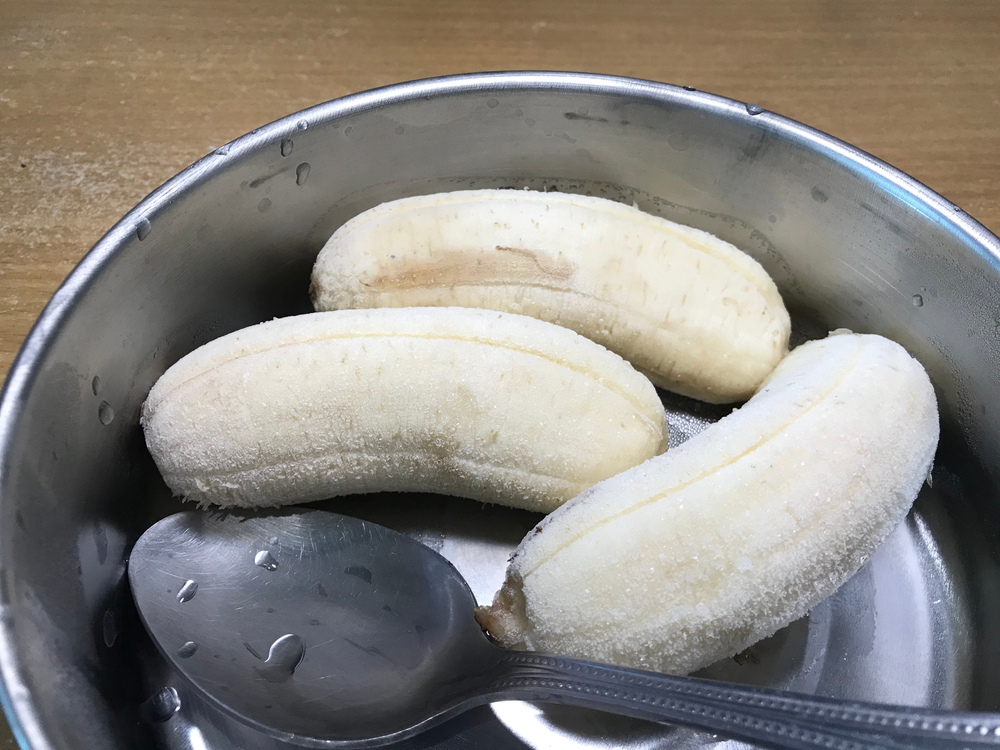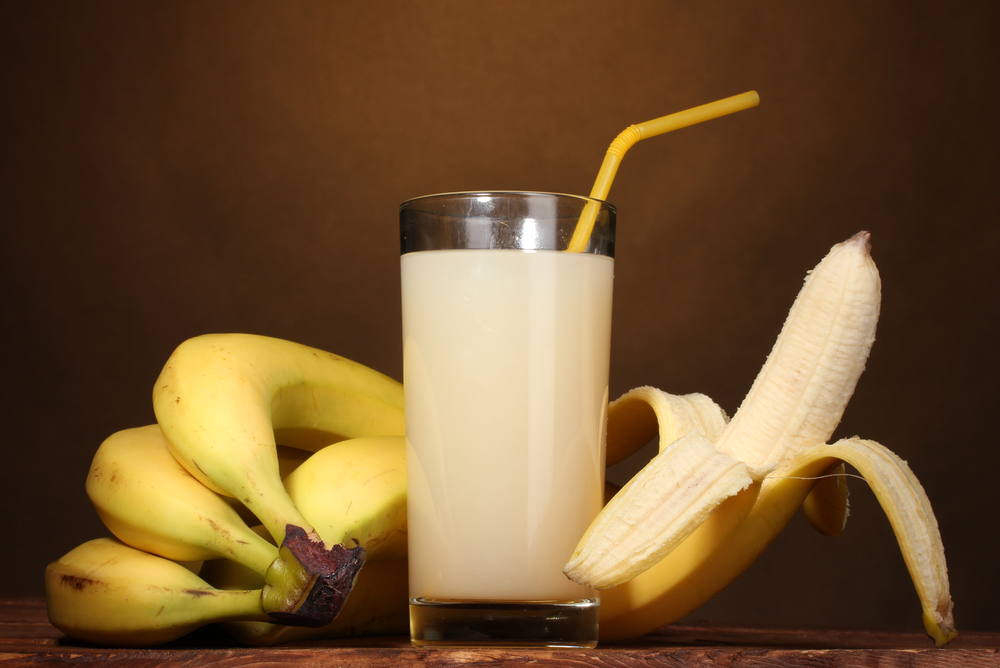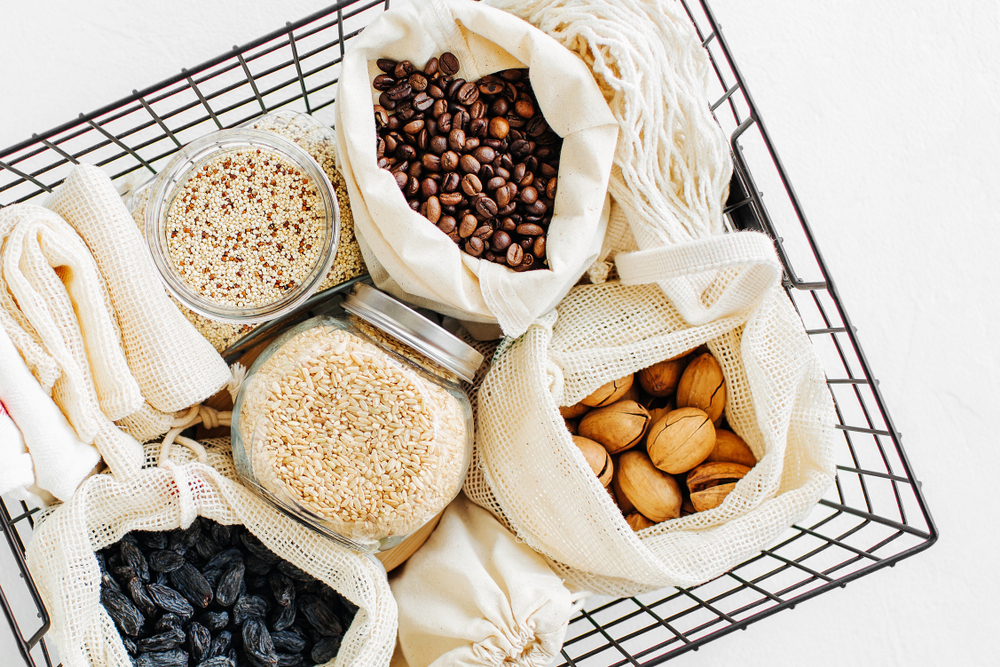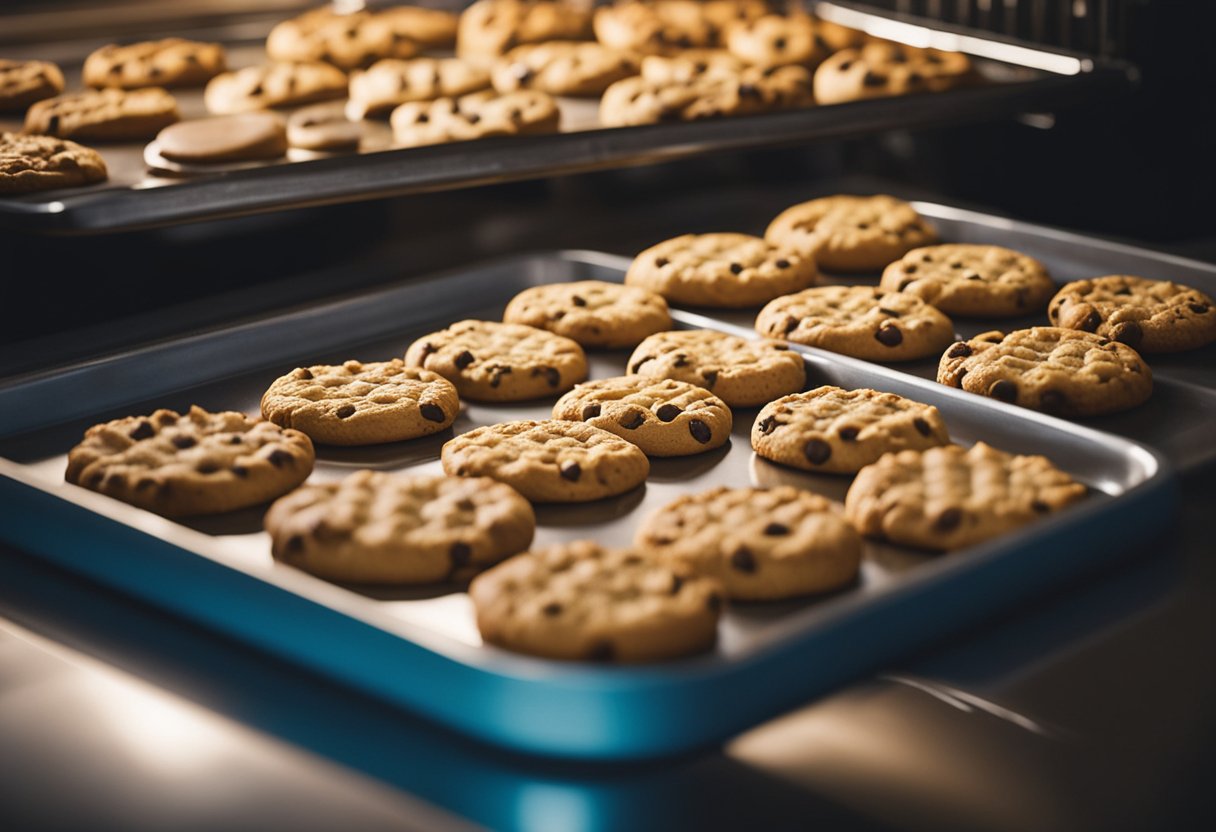Banana pudding is a delicious dessert enjoyed by many, with its creamy texture, sweet taste, and layers of ripe bananas and wafer cookies.
As a perishable item, it’s essential to understand how long banana pudding can last in the fridge to ensure its freshness, food safety, and enjoyable eating experience.
When it comes to the shelf life of banana pudding in the refrigerator, various factors come into play. These may include the freshness of the ingredients, how the pudding is prepared, and the storage conditions.
Additionally, being aware of the signs that your banana pudding has spoiled can save you from consuming a compromised dessert.
Key Takeaways
- Banana pudding’s refrigerated shelf life depends on factors like ingredient freshness, preparation, and storage conditions.
- Proper storage is crucial to maintain the quality and safety of banana pudding.
- Be aware of signs of spoilage, such as off smells, textures, or colors, to avoid consuming compromised banana pudding.
Understanding Banana Pudding

Banana pudding is a popular dessert that originated in the southern United States. This delightful dish is typically made with layers of ripe bananas, sweet pudding, and Nilla wafers or vanilla wafer cookies.
There are many variations of banana pudding, including homemade recipes and those that use store-bought pudding mix. Commonly used flavors include vanilla, banana-flavored, and even chocolate pudding.
In most homemade banana pudding recipes, the main ingredient is a smooth and creamy custard. Vanilla custard is the traditional choice and is made by combining fresh milk, sugar, eggs, flour, and butter.
It is essential to use pasteurized milk to ensure the safety and quality of the custard. To achieve the signature flavor of banana pudding, the mixture is often infused with vanilla extract.
Preparing banana pudding requires the use of ripe bananas, which provide the ideal sweetness and texture for the dessert. While cooked bananas can also be used, fresh bananas are usually preferred to maintain their natural flavor and mouthfeel.
The bananas are often layered with the pudding, alternating with layers of Nilla wafers or vanilla wafer cookies. These cookies add a contrasting texture and additional sweetness that complements the other ingredients.
Some variations of banana pudding may include sweetened condensed milk, salt, and chopped walnuts. Depending on personal preferences, these optional ingredients can be added to the custard or used as garnishes.
When attending a potluck or gathering with friends and family, banana pudding is known for being a crowd-pleasing and straightforward dessert option.
Numerous easy recipes can be followed to create a delicious banana pudding. From using homemade vanilla pudding to store-bought mixes, this dessert can be easily customized to suit individual tastes and preferences.
Regardless of the variation, the combination of creamy custard, ripe bananas, and sweet wafers creates a delightful, satisfying, and widely loved dessert.
Banana Pudding’s Refrigerated Shelf Life
Banana pudding is a delicious dessert that many people enjoy. When properly stored and refrigerated, it can last for a decent amount of time, ensuring that you can enjoy it for several days.
This section will discuss the refrigerated shelf life of banana pudding, focusing on essential factors like temperature and spoilage.
When properly stored in an airtight container, banana pudding can last in the fridge for up to 3 to 4 days. It is crucial to maintain the refrigerator temperature at 40°F (4°C) or lower to prevent the growth of harmful bacteria.
Failure to keep the temperature at the recommended level may result in the spoilage of the banana pudding before the specified time.
While refrigeration is the most common method of preserving banana pudding, it’s essential to keep in mind that it’s not entirely invulnerable to spoilage.
Factors such as improper storage or a compromised refrigerator seal may contribute to a faster rate of spoilage.
If you notice any signs of spoilage, such as mold or an off-odor, discard the pudding immediately to avoid potential foodborne illnesses.
It’s worth noting that banana pudding should not be kept at room temperature for more than two hours. This is because harmful bacteria can multiply quickly in the “danger zone” between 40°F (4°C) and 140°F (60°C), increasing the risk of food poisoning.
If you need to store the dessert for a longer period, it’s best to keep it refrigerated rather than leaving it out on the counter.
In summary, banana pudding can last for up to 3 to 4 days when properly refrigerated and stored in an airtight container.
Be mindful of various factors such as temperature, storage methods, and potential spoilage indicators to ensure that your banana pudding remains fresh and enjoyable.
The Role of Ingredients in Storage

When storing banana pudding, it is important to consider the role that each ingredient plays in determining the proper storage conditions and longevity.
Here, we will shed light on the factors influencing the shelf life of a banana pudding containing milk, sugar, vanilla pudding, bananas, whipped cream, vanilla wafers, and eggs.
Milk and eggs are perishable ingredients that have a significant impact on the longevity of the pudding, as they can spoil quickly if not stored properly.
To ensure the safety and freshness of banana pudding, it should be refrigerated promptly after preparation. Keep in mind that the refrigerator should be set at a temperature of 40°F (4°C) or below.
Sugar and vanilla pudding contribute to the overall flavor and sweetness of the pudding, but they also act as preservatives. Their presence can help extend the shelf life of the dessert by inhibiting the growth of harmful microorganisms.
However, the small amounts of sugar and pudding mixed in with other perishable ingredients may not suffice to significantly increase the storage time.
Bananas, as a fresh fruit, are prone to browning and losing their original texture when exposed to air. This is due to the enzymatic browning reaction.
When added to the pudding, bananas should be coated well with the pudding mixture to slow down the browning process.
However, even with this precaution, the bananas might still discolor and soften over time.
Whipped cream and vanilla wafers provide a contrasting texture in banana pudding. Whipped cream, being a dairy product, shares similar perishability with milk and eggs.
It will deflate and lose its structure over time, even if refrigerated. Vanilla wafers, on the other hand, are less perishable. However, when layered in the pudding, they absorb moisture and may become soggy within a day or two.
Overall, it is crucial to store banana pudding in an airtight container and keep it refrigerated, as the perishable ingredients dictate the maximum storage time. In the right conditions, banana pudding can typically last up to 3-4 days in the fridge.
However, its texture and appearance might change over that period. It is always best to consume it as soon as possible to enjoy its diverse flavors and textures at their prime.
Importance of Proper Storage
Proper storage is essential to maintain the quality and freshness of banana pudding. When stored correctly, banana pudding can last for several days in the refrigerator.
Choosing the right container and method of storage can greatly affect the longevity of the pudding.
Using an airtight container is crucial for prolonging the life of banana pudding. This type of container helps prevent the growth of bacteria and keeps external odors from contaminating the dessert.
Additionally, it helps retain the pudding’s moisture, which prevents it from drying out and losing its original texture.
Plastic containers or glass containers with tight-fitting lids are both suitable options for storing banana pudding. Alternatively, one can use a bowl covered with plastic wrap.
Securely covering the container or bowl with plastic wrap minimizes the exposure to air and maintains the moisture content inside the pudding.
When storing banana pudding in the refrigerator, it’s important to place it in a designated area, ideally away from other food items with strong odors.
This further ensures that the pudding remains free from contaminants and maintains its taste and texture.
In summary, proper storage is key to keeping banana pudding fresh and delicious in the refrigerator. Using an airtight container or a covered container and placing it in a suitable area in the fridge will help preserve the quality and extend the shelf life of the pudding.
Signs of Spoiled Banana Pudding

Spoiled banana pudding can be unsafe to eat and might cause health issues such as vomiting if consumed. It is essential to recognize the signs of spoilage to avoid potential problems. One of the first indicators of spoiled pudding is a change in texture.
Freshly made banana pudding typically has a smooth, creamy consistency. Over time, the texture can become watery or even develop clumps, which signifies that it has been left in the refrigerator for too long.
Another sign of spoilage is a noticeable change in flavor. Banana pudding generally has a sweet and mildly fruity taste. However, when it spoils, it can acquire a sour or unpleasant flavor.
This alteration in taste is due to the growth of bacteria, which can thrive in refrigerated environments if the pudding is not stored correctly or has been left in the fridge for an extended period.
In addition to changes in texture and flavor, spoiled banana pudding may exude a strong or off-putting smell. This smell is often a result of bacteria or mold growing on the pudding.
If your banana pudding emits a foul or unusual odor, it is likely unsafe to eat and should be discarded.
Lastly, the physical appearance of the banana pudding can help determine whether it has spoiled or not. If you notice the development of a watery layer on the surface, this may be a sign of excess moisture.
Furthermore, the presence of mold or discoloration on the pudding indicates that it has become contaminated and should not be consumed.
When detecting any of these signs, it is essential to err on the side of caution and discard the banana pudding rather than risking illness.
Always remember to store pudding in the refrigerator in an airtight container to prolong its shelf life and maintain its freshness.
Freezing and Thawing Banana Pudding
Banana pudding can be frozen for longer storage, but the texture and appearance might change slightly after thawing. To freeze banana pudding, follow these steps:
- Place the pudding in an airtight container: Use a container specifically designed for freezing, or seal it tightly with plastic wrap or aluminum foil.
- Label and date the container: This will help you keep track of how long the pudding has been stored.
- Freeze the pudding: Put the container in the freezer, ensuring it’s placed flat to prevent any spills.
When it’s time to enjoy the banana pudding, the thawing process is essential for preserving the taste and texture. Here’s how to properly thaw banana pudding:
- Remove the container from the freezer: Allow the banana pudding to sit in the refrigerator for several hours or overnight to gradually thaw.
- Check the texture: Once the pudding has thawed, there might be some separation of the ingredients. Gently stir the pudding to combine the ingredients.
- Serve and enjoy: Place the thawed pudding in serving dishes and enjoy it within a couple of days.
While freezing and thawing banana pudding is possible, it’s important to note that the quality may not be as good as freshly made pudding.
The bananas may darken, and the texture might be less smooth. To minimize these effects, consider adding a layer of plastic wrap directly on the surface of the pudding before freezing.
In conclusion, although banana pudding can be frozen and thawed for extended storage, it is best to consume it within a few days of preparation to enjoy the optimal taste and texture.
Leftover Banana Pudding Management
Managing leftover banana pudding properly is essential to ensure its freshness and taste. For store-bought or packaged banana pudding, it is important to follow the manufacturer’s guidelines on storage and consumption, which can usually be found on the packaging.
When it comes to prepared homemade banana pudding, it is best stored in an airtight container in the refrigerator. Ideally, the pudding should be consumed within 3-4 days to maintain optimal flavor.
- Refrigeration: Place the pudding in a shallow, sealed container for even cooling and to prevent the spread of bacteria or any unwanted odors. Cover the surface of the pudding with plastic wrap to prevent it from drying out.
- Microwaving: When reheating leftover banana pudding, it is recommended to use a microwave-safe container. Heat it in short intervals and stir frequently to ensure even distribution of heat throughout the pudding.
Although freezing is not recommended for banana pudding due to the change in texture once thawed, it can still be frozen if necessary. To freeze the pudding, place it in a sealed container and label it with the date.
When ready to consume, thaw the pudding in the refrigerator and consume within a day to ensure the best taste and texture.
Remember that the quality of leftover banana pudding largely depends on how well it has been stored. By using proper storage techniques, the delicious dessert can be enjoyed with confidence for several days.
Nutritional Value and Health Benefits

Banana pudding is a popular dessert made from ripe bananas, vanilla wafers, and a creamy, custard-like base. It offers a combination of flavors and nutritional components that can be beneficial to a balanced diet when consumed in moderation.
One serving of banana pudding (approximately 100 grams) provides about 120 calories. Most of these calories come from carbohydrates (15g-20g), with only a small amount of fat (3g-5g) and negligible cholesterol.
Since the dessert is sweetened, its sugar content might be on the higher side, so it’s essential to consume it in moderation, particularly for those watching their sugar intake.
One significant advantage of banana pudding is its fiber content. Bananas are a good source of dietary fiber, which aids in digestion and helps maintain healthy gut function.
A 100-gram serving of banana pudding contains roughly 3 grams of fiber, making it a decent option for individuals looking to add fiber to their diet without resorting to whole fruit or other fiber-rich foods.
Bananas are also known for their potassium content. Potassium is an essential nutrient that helps maintain proper muscle function, regulate blood pressure, and maintain a healthy electrolyte balance.
A 100-gram serving of banana pudding offers around 200-300 milligrams of potassium.
In addition, banana pudding contains a reasonable amount of vitamin C, thanks to the presence of bananas in the dish. Vitamin C is an antioxidant that helps support immune system function and promotes collagen production for healthy skin.
A 100-gram serving of banana pudding can provide about 10% of the recommended daily allowance for vitamin C.
When considering banana pudding in the context of a balanced diet, it’s clear that it provides some essential nutrients and health benefits. Its fiber, potassium, and vitamin C content make it a nutrient-dense dessert option when compared to other sweets.
However, it is still crucial to consume banana pudding in moderation due to many dessert’s sugar and calorie content.
In conclusion, banana pudding can be enjoyed as a delicious and relatively nutritious dessert option, providing essential nutrients like fiber, potassium, and vitamin C.
It is best consumed in moderation as part of a balanced diet, ensuring that its benefits are reaped without overindulging in sugar and calories.
Frequently Asked Questions
How long does refrigerated banana pudding last?
Refrigerated banana pudding can last for up to four days in an airtight container. To maintain its freshness, it is essential to keep it properly covered to prevent the formation of a skin on the top.
Can you freeze banana pudding for longer storage?
Yes, you can freeze banana pudding for longer storage. Before freezing, ensure the pudding is in a freezer-safe container with a tight-fitting lid. It can last up to three months when properly stored in a freezer.
However, the texture might change slightly after defrosting, so it is best to consume within the recommended refrigeration time.
What is the ideal chilling time before serving?
The ideal chilling time for banana pudding is at least three to four hours before serving. Chilling the pudding helps it set properly and enhances the flavors.
However, avoid chilling it for too long, as the texture of the wafers and bananas might degrade over time.
Do vanilla wafers soften over time in the pudding?
Vanilla wafers will soften over time in the pudding due to the moisture content. The softening of the wafers is normal and contributes to the deliciously creamy texture of banana pudding.
Is banana pudding safe to consume after a week?
It is not advisable to consume banana pudding after a week, as its quality and freshness will significantly decline. Although it may still be safe to eat, the flavors and textures will be compromised, leading to an unsatisfactory experience.
Do bananas spoil in the pudding over time?
Yes, the bananas in banana pudding can spoil over time. When exposed to air, the bananas will oxidize and turn brown, affecting the overall appearance and taste of the pudding.
To maintain the freshness of banana pudding, keep it properly covered and refrigerated, and consume it within four days.







